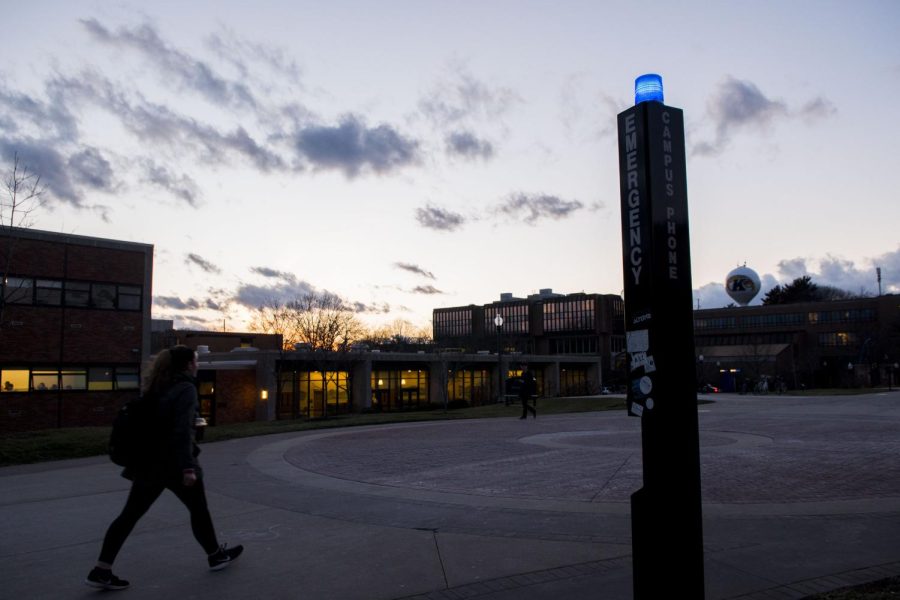A sense of safety on campus
February 26, 2017
Students have access to police at every turn with over 40 emergency blue lights on campus.
However, some colleges, such as Bakersfield College in California, have been steadily getting rid of the system.
Tricia Knoles, community resource officer for the Kent State Police Department, said the university will not be doing away with the lights anytime soon. Knoles said she understands the importance of keeping them on campus.
“We will always have the lights because even if they don’t get as used as much as cell phones, there’s that one person whose phone isn’t working, or maybe they got robbed and they don’t have their cell phone,” Knoles said. “There’s always going to be (that) one person that needs the blue light phones.”
Students are also pleased to keep the blue lights around.
Sophomore interior design major Natalie Hanna said she used them often during her freshman year and wants other students to have the same access as she did.
“I’m glad to know they are around even though I don’t use them anymore,” Hanna said. “Thinking back, I was scared to walk back at night and I’m sure other freshmen have felt that way and will continue to feel that way.”
Sophomore early childhood education major Kayla Taglione said she never knew she needed them until she had to use one.
“I was walking across campus alone at night and felt like I was being followed, but I wasn’t for sure. I used the blue emergency phone just in case,” Taglione said. “I wasn’t taking any risks and I’m glad I had that as an option.”
Each blue light has a key pad accompanied by a yellow information sheet. The sheet includes current location and a list of what numbers to dial for specific assistance, such as PARTA bus services and security escorts.
For emergencies, a red button located above the dial pad calls 9-1-1 when pressed.
The lights get tested multiple times throughout a semester, Knoles said. Officers are sent out to do trial runs to ensure everything is hooked up properly and that the location services are correct. The time in which it takes officers to arrive on scene can vary depending on time of the day and overall manpower on duty that day.
“Our typical response time can range anywhere from 30 seconds to four minutes,” Knoles said. “Rush hour and construction (are) our biggest obstacles.”
With more construction brings about more blue lights. As campus continues to expand, the emergency phones will follow.
“The number changes often because of all the construction,” Knoles said. “We’ll keep placing more blue lights as they construct more buildings and walkways.”
The blue lights create a sense of security for students, as well as an avenue for safety when needed.
“When I’m walking late at night now, I always look to see where the blue lights are, so I know what direction to start bolting if I ever feel in danger,” Taglione said. “It’s comforting to see them and know where the nearest ones are.”
Sarah Heber is the safety reporter, contact her at [email protected].

























